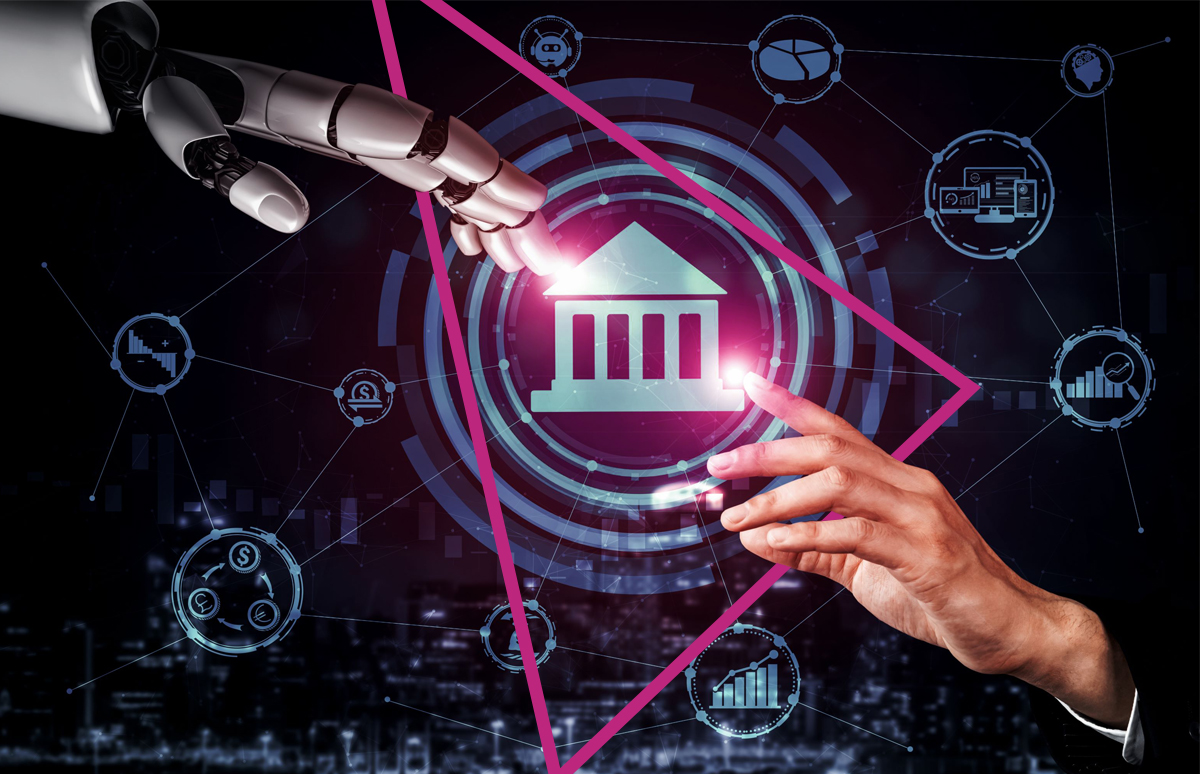1. How does AI integration reshape the landscape of data privacy?
The evolution of data privacy uplifted by the rise of AI, demands a thorough reassessment of existing paradigms. While traditional data privacy measures primarily focused on safeguarding text-based information, the landscape has undergone a profound transformation with the advent of AI technologies.
AI’s remarkable capabilities now enable the transcription and translation of spoken words in real-time, transcending language barriers. However, this transformative process has inadvertently eroded the protection of originally spoken content, extending challenges to encompass images, video, voice, and text due to the proliferation of deep fake technologies.
While regulatory frameworks like GDPR and CCPA, tries to ensure compliance .Preventing misuse remains a formidable and persistent challenge. The growing demand for extensive data to train AI models raises significant concerns about user privacy, particularly with the advent of advanced analytics and profiling capabilities that enable detailed user profiling without explicit consent.
Furthermore, the integration of AI models into decision-making processes accentuates the imperative for transparent AI systems, especially in contexts with profound privacy implications. As the AI landscape continues to evolve, it introduces complexities that demand continuous efforts to address emerging challenges effectively. Striking a delicate balance between regulatory compliance, transparency, and robust security measures is essential to safeguard individual privacy in an increasingly AI-driven world. Only through proactive and concerted efforts can we navigate the intricacies of the evolving AI landscape while upholding the fundamental right to privacy for all individuals..
2. What real-world scenarios illustrate the threats posed by AI to data privacy?
In real world, the concerns surrounding data privacy are exemplified by the rise of Deepfakes, a technology that leverages AI to craft remarkably convincing fake videos or audio recordings. This poses a significant threat as these manipulated media can deceive individuals and propagate misinformation. For instance, consider a scenario where a Deepfake video surfaces depicting a public figure making inflammatory statements. This could lead to widespread public outrage, tarnishing the individual’s reputation and causing social unrest.
Furthermore, the expanded scope of targeted advertising presents another tangible concern. While platforms like Google historically relied on user intent for targeted ads, the proliferation of voice-activated devices such as Alexa, Siri, and Echo introduces a new frontier. Imagine a scenario where a family discusses vacation plans within earshot of their smart speaker. Suddenly, they find themselves bombarded with advertisements for travel deals, raising immediate concerns about the privacy and security of their spoken conversations.
Moreover, the impact of AI on e-KYC (Know Your Customer) processes in the financial sector is palpable. Faced with the threat of Deepfakes, financial institutions are compelled to enhance their identity verification measures. This may include implementing liveness checks and facial recognition technologies to authenticate customer identities accurately. Consider a scenario where a fraudster attempts to open a bank account using a Deepfake video to impersonate a legitimate customer. Through robust AI-powered identity verification processes, financial institutions can thwart such attempts, safeguarding customer data and preventing fraudulent activities.
3. Addressing biases in AI decision-making for more equitable outcomes.
In the realm of addressing biases in AI decision-making, understanding the underlying mechanisms, particularly in the context of deep learning, is crucial. The source of bias often lies in the input data, emphasizing the need to recognize and rectify skewness. Identifying flaws in the data used for training, at the initial stage of model development, or within the algorithm itself is vital to addressing biases. Biases may result from biased selection in the algorithm or the absence of a feedback loop, allowing biases to persist and strengthen over time. Explainable AI emerges as a rapidly evolving solution to mitigate bias. By providing transparency into how AI models make decisions, it enables stakeholders to trace back the origins of biases, facilitating corrective measures in refining training datasets or adjusting algorithmic parameters. The evolving nature of Explainable AI positions it as a comprehensive solution for addressing biases in AI decision-making, fostering more equitable outcomes.
Shifting focus to the challenges of personal privacy, the extensive digital footprint has compromised individual privacy. The responsibility to address this issue now lies with social media platforms equipped with tools to detect and block deepfake videos. Deepfakes, posing a wider ethical problem, require an ethical approach to innovation, emphasizing the role of individuals with ethical standards. However, the complexity arises from the wide reach of deep fakes, as individuals may not know the origin or intentions behind the generated content. The responsibility to filter and restrict the circulation of deep fake media falls on social media platforms, given their capacity to identify and block such content. This shift points at the broader ethical considerations associated with advanced media manipulation technologies.
4. What significance do ethical principles hold in the development of AI, and how do they intersect with user privacy?
The pivotal role of ethical principles in AI development and their impact on user privacy.
Highlighting the pivotal role of ethical principles in AI development and their profound impact on user privacy, it becomes evident that responsible handling of personal data is imperative in any AI-related endeavor. Several foundational principles can be employed to minimize privacy invasion:
a) Optimal Data Usage:
The ethical utilization of personal data is non-negotiable in AI development. A fundamental principle involves collecting and utilizing only the minimal data necessary for the development of AI models, thereby mitigating unnecessary intrusion into user privacy.
b) Synthetic Data:
Introducing the concept of synthetic data can significantly enhance user privacy. By generating data with all the characteristics of real data but without the possibility of reverse engineering to establish identity, organizations can ensure robust model learning while safeguarding user privacy.
c) Consent Management:
With the establishment of regulations such as GDPR and CCPA, users are empowered to provide explicit consent for the storage and usage of their data. Implementing effective consent management practices allows users to control the fate of their personal data. At any given point, users retain the right to revoke consent, compelling organizations to cease tracking their personal data and reinforcing user privacy rights. This highlights the importance of aligning AI development with ethical principles to uphold user privacy and foster responsible innovation.
Addressing the challenges of personal privacy in the face of the escalating threat of AI-generated deep fakes is paramount. As our digital footprint expands, the risk associated with AI-generated deep fakes grows exponentially. These manipulations can target various forms of media, including videos, images, and voice data, making it increasingly difficult to identify the authenticity of content.
The prevalence of deepfakes introduces broader concerns related to individual rights and ethical considerations in a world where legal frameworks are often fragmented and struggle to keep pace with technological advancements. While there are now several tools available to detect deep fakes, it is crucial for social media platforms to take responsibility for verifying the authenticity of media before it is shared. This proactive stance is vital in curbing the dissemination of misleading or fabricated content, thus safeguarding personal privacy and integrity in an era dominated by AI-generated deep fakes.
5. What are the principal regulatory actions aimed at promoting ethical AI deployment and safeguarding data privacy?
In the landscape of AI, key regulatory measures play a pivotal role in ensuring ethical AI use and safeguarding data privacy. The General Data Protection Regulation (GDPR) and the California Consumer Privacy Act (CCPA) stand out as significant frameworks in this regard. GDPR, implemented in the European Union, emphasizes individual data rights, requiring organizations to obtain explicit consent, provide transparency in data usage, and ensure the right to erasure. Similarly, CCPA in California grants consumers the right to know about, delete, and control the sale of their personal information. Both regulations emphasize on the importance of transparency, user consent, and empowering individuals with control over their data. These measures not only set standards for responsible AI practices but also establish legal frameworks that organizations must adhere to, reinforcing the ethical use of AI and the protection of individuals’ privacy rights.
Advocating for educational initiatives aimed at increasing public awareness regarding the potential misuse of personal data is crucial. This involves providing accessible resources and training programs to help individuals comprehend the decision-making processes of AI systems, elucidating the role of Explainable AI (XAI). It also entails urging organizations to transparently disclose their utilization of personal data and advocating for user-friendly interfaces for consent management. Utilizing platforms and services that facilitate easy access, export, and transfer of data across different services contributes to empowering individuals in controlling the use of their personal information. Fundamental to this effort is the awareness of individuals’ rights concerning their personal data. Given the escalating concerns about data privacy, fostering awareness and educating individuals about their rights serves as a pivotal step. Equipping individuals with knowledge, tools, and an understanding of legal frameworks is essential for them to assert control over their personal data in the era of AI.
6. Concerning the banking sector, how is AI reshaping the landscape of banking technology and what implications does this have for customer data privacy?
In the banking sector, AI is reshaping the landscape of banking technology in several ways but let me detail some of the use case where we are actively working on multiple engagements –
Personalized Customer Experience:
Offer personalized services and products catering to individual customer demands. Through data analysis and machine learning algorithms, we are enabling banks to analyze customer spend patttern, predict future needs, and provide targeted recommendations, thereby enhancing customer satisfaction and loyalty.
Fraud Detection and Prevention:
With payments becoming more realtime and also cross border transfer can happen in few clicks there is lot of work which is happening on fraud detection systems. In this we try to analyze vast amounts of transaction data in real-time to identify suspicious patterns and anomalies indicative of fraudulent activity. By automating fraud detection processes, banks can detect and prevent fraudulent transactions more effectively, safeguarding customer assets and maintaining trust.
Risk Management:
AI algorithms can assess creditworthiness and risk profiles more accurately by analyzing various data sources, including transaction history, credit scores, and external factors. This enables banks to make more informed lending decisions, manage risks more effectively, and optimize their loan portfolios.
7. What innovative measures are banks implementing to enhance security and privacy in the face of evolving cyber threats and technological advancements?
With a wide adaption of latest technologies to enable all the bamking service offerings over Digital , lot of innovative measures are also being implemented to enhance security and privacy in the face of evolving cyber threats and technological advancements:
Multi-Factor Authentication:
Many banks are adopting Multi-Factor authentication methods such as fingerprint scanning, facial recognition, and voice recognition to strengthen security and provide a more seamless and secure login experience for customers.
Behavioral Analytics:
Banks are leveraging behavioral analytics to monitor customer interactions and detect anomalies in real-time. By analyzing patterns of behavior, such as transaction history, device usage, and navigation habits, banks can identify potentially fraudulent activity and intervene to prevent unauthorized access.
Encryption Techniques:
Banks are implementing encryption techniques to protect sensitive data both in transit and at rest. This includes the use of end-to-end encryption, secure sockets layer (SSL) encryption, and data tokenization to ensure that customer information remains secure and confidential.
Continuous Monitoring and Threat Detection:
Banks are deploying sophisticated monitoring and threat detection systems to continuously monitor their networks, systems, and applications for suspicious activity. This includes the use of intrusion detection systems (IDS), intrusion prevention systems (IPS), and security information and event management (SIEM) tools to identify and respond to potential threats in real-time.
Machine Learning and AI:
Banks are harnessing the power of machine learning and artificial intelligence (AI) to enhance security and privacy. This includes using AI algorithms to analyze vast amounts of data to identify patterns and anomalies indicative of cyber threats, as well as to automate response and remediation actions.
About the Author
 As the Chief Technology Officer of key Accounts, Kishan Sundar helms the technology strategy for key accounts. His leadership in creating engagement and impact through customized technology solutions, emerging technologies, and innovation for the key accounts will play a crucial role in accelerating Maveric’s revenue growth and fuelling its aspiration of becoming one of the top three Bank Tech companies by 2025.
As the Chief Technology Officer of key Accounts, Kishan Sundar helms the technology strategy for key accounts. His leadership in creating engagement and impact through customized technology solutions, emerging technologies, and innovation for the key accounts will play a crucial role in accelerating Maveric’s revenue growth and fuelling its aspiration of becoming one of the top three Bank Tech companies by 2025.
Originally Published in CXO Today


